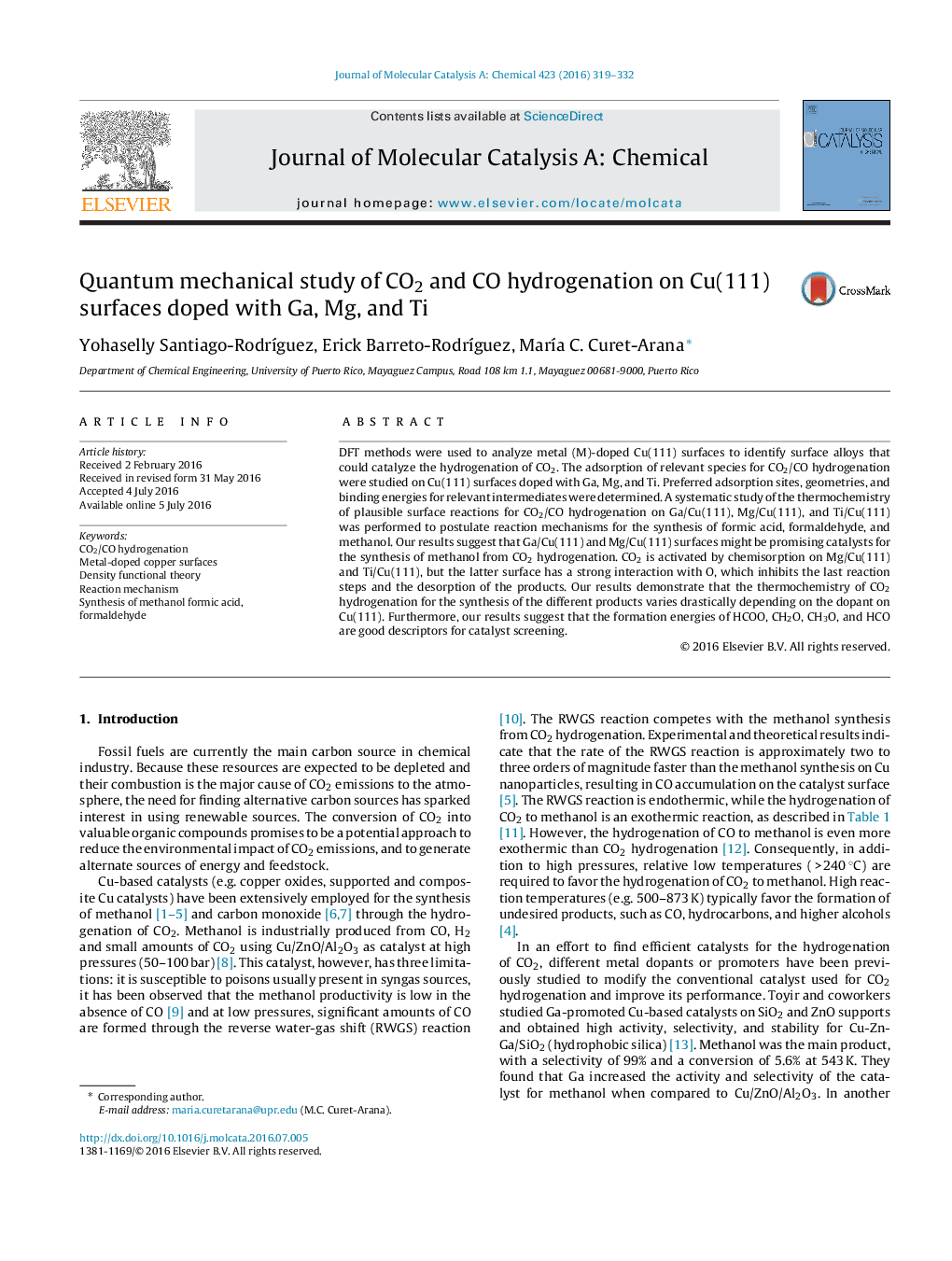| Article ID | Journal | Published Year | Pages | File Type |
|---|---|---|---|---|
| 64555 | Journal of Molecular Catalysis A: Chemical | 2016 | 14 Pages |
•Thermochemistry for the hydrogenation of CO2 and CO on M(=Ga, Mg, Ti)/Cu(111).•Calculated binding geometries and energies of adsorbates on M(=Ga, Mg, Ti)/Cu(111).•Reaction mechanisms for the synthesis of formic acid, formaldehyde, and methanol.
DFT methods were used to analyze metal (M)-doped Cu(111) surfaces to identify surface alloys that could catalyze the hydrogenation of CO2. The adsorption of relevant species for CO2/CO hydrogenation were studied on Cu(111) surfaces doped with Ga, Mg, and Ti. Preferred adsorption sites, geometries, and binding energies for relevant intermediates were determined. A systematic study of the thermochemistry of plausible surface reactions for CO2/CO hydrogenation on Ga/Cu(111), Mg/Cu(111), and Ti/Cu(111) was performed to postulate reaction mechanisms for the synthesis of formic acid, formaldehyde, and methanol. Our results suggest that Ga/Cu(111) and Mg/Cu(111) surfaces might be promising catalysts for the synthesis of methanol from CO2 hydrogenation. CO2 is activated by chemisorption on Mg/Cu(111) and Ti/Cu(111), but the latter surface has a strong interaction with O, which inhibits the last reaction steps and the desorption of the products. Our results demonstrate that the thermochemistry of CO2 hydrogenation for the synthesis of the different products varies drastically depending on the dopant on Cu(111). Furthermore, our results suggest that the formation energies of HCOO, CH2O, CH3O, and HCO are good descriptors for catalyst screening.
Graphical abstractFigure optionsDownload full-size imageDownload high-quality image (100 K)Download as PowerPoint slide
